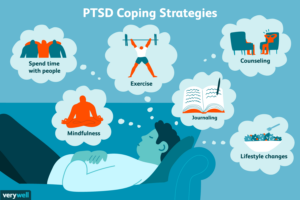Currently, there are about 12 million people in the U.S. that suffer from a form of post-traumatic stress disorder (PTSD). June represents PTSD Awareness Month. During this month, it’s essential to highlight the importance of raising awareness and advocating for support and change. Like other forms of mental illness, PTSD is often highly stigmatized. However, having PTSD is nothing to be ashamed of. There are resources and ways to find help for yourself or those you know with PTSD.
What is PTSD?
According to the APA, PTSD “is a psychiatric disorder that may occur in people who have experienced or witnessed a traumatic event, series of events or set of circumstances.” Although these events can differ from person to person, below are just a few examples of what might trigger PTSD.
- Natural disasters.
- War, combat, and terrorist acts.
- Domestic violence and sexual assault.
- Generational trauma.
The term PTSD became widely used in 1980 when it appeared in the American Psychiatric Association’s Diagnostic and Statistical Manual of Mental Disorders (DSM-lll). Prior to this, it was often referred to as “shellshock” due to trauma from World War I and World War II. Thankfully, research has allowed us to learn more about PTSD and coping methods.
Symptoms of PTSD
Symptoms of PTSD can look different for everyone, but common symptoms include:
- Flashbacks and reliving traumatic events.
- Recurring memories or nightmares.
- Physical signs of stress such as sweating, racing heartbeat, and panic attacks.
- Avoidant behaviors.
- Irritability, outbursts, and being easily startled.
- Isolation, self-blaming, and suicidal thoughts.
Click here to read more symptoms of PTSD as well as risk factors.
Coping and Treatment
Throughout the year, the Department of Veterans Affairs provides many resources for those suffering from PTSD. For PTSD Awareness Month, they have taken the time to highlight these resources below:
- Get Help in a Crisis
- Find a Therapist
- Help for Veterans
- Help for Family and Friends
You can also find self-help and coping tools to help you manage stress reactions, regardless of whether or not you have PTSD.
